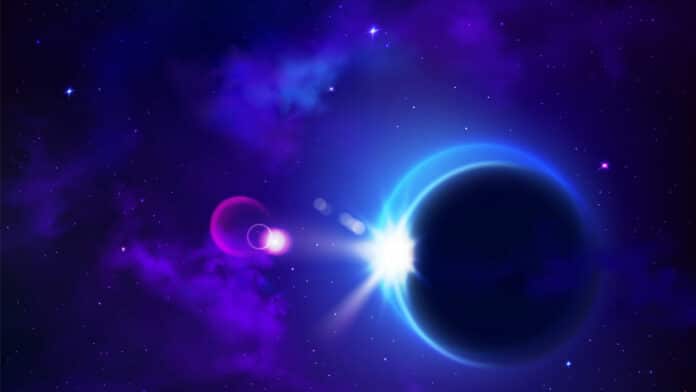The production mechanism of repeating fast radio bursts (FRBs) is still a mystery, and correlations between burst occurrence times and energies may provide important clues to elucidate it.
Previous research has found that the energy distribution of recurring FRBs and earthquakes and solar flares are primarily comparable. However, new analysis of the timing and energy of FRBs conducted at the University of Tokyo revealed clear distinctions between FRBs and solar flares and several notable similarities between FRBs and earthquakes.
This supports the idea that neutron star surface “starquakes” are what generate FRBs. This discovery may improve our understanding of nuclear physics, high-density matter behavior, and earthquakes.
Professor Tomonori Totani from the Department of Astronomy at the Graduate School of Science said, “It was theoretically considered that the surface of a magnetar could be experiencing a starquake, an energy release similar to earthquakes on Earth. Recent observational advances have led to the detection of thousands more FRBs, so we took the opportunity to compare the now large statistical data sets available for FRBs with data from earthquakes and solar flares to explore possible similarities.”
The distribution of delay durations between two consecutive bursts has been the main focus of statistical analysis of FRBs up to this point. Totani and co-author Yuya Tsuzuki, a graduate student in the same department, highlight that just measuring the wait-time distribution ignores potential correlations between different bursts.
To determine correlation in two dimensions, the scientists looked at the time and emission energy of around 7,000 bursts from three different repeater FRB sources. The time-energy correlation of earthquakes was then examined using data from Japan, and solar flares were examined using records from the Hinode international mission to study the sun. The outcomes of all three events were then compared.
Unlike other studies, scientists were surprised to see that their analysis showed a striking similarity between FRBs and earthquake data but a distinct difference between FRBs and solar flares.
Totani explained: “The results show notable similarities between FRBs and earthquakes in the following ways: First, the probability of an aftershock occurring for a single event is 10-50%; second, the aftershock occurrence rate decreases with time, as a power of time; third, the aftershock rate is always constant even if the FRB-earthquake activity (mean rate) changes significantly; and fourth, there is no correlation between the energies of the main shock and its aftershock.”
This strongly argues that neutron stars have a solid crust covering their surfaces and that rapid starquakes on these crusts unleash enormous amounts of energy that we observe as FRBs. The team plans to continue examining additional data on FRBs to confirm that the similarities they have discovered are widespread.
Totani said, “By studying starquakes on distant ultradense stars, which are completely different environments from Earth, we may gain new insights into earthquakes. The interior of a neutron star is the densest place in the universe, comparable to that of the interior of an atomic nucleus. Starquakes in neutron stars have opened the possibility of gaining new insights into very high-density matter and the fundamental laws of nuclear physics.”
Journal Reference:
- Tomonori Totani and Yuya Tsuzuki. “Fast radio bursts trigger aftershocks resembling earthquakes, but not solar flares.” Monthly Notices of the Royal Astronomical Society. DOI: 10.1093/mnras/stad2532
